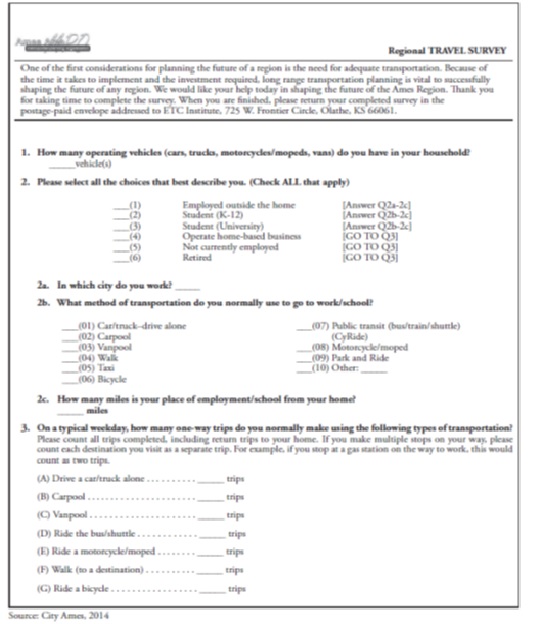Transportation Fundamentals
What is Transportation Planning?
- Transportation planning is a process of defining policies, goals, investments, and designs to prepare for future needs to achieve safer, faster, comfortable, convenient, economical and environment-friendly movement of people and goods to their destinations.
- This planning process involves the evaluation, assessment, design, and siting of transport facilities e.g. streets, highways, bike lanes, and public transport facilities.
- Traditional transportation planning has following steps: defining goals and objectives, identifying problems, generating alternatives, evaluating alternatives, and developing plans
- Planning is commonly scale specific and multidimensional.
- Transportation planning can be a highly technical process, which often relies on computer models and other sophisticated tools to simulate the complex interactions of transportation system performance.
- Lately new aspects are added to transportation planning : transit oriented development, incremental planning, collaborative planning, and political bargaining etc.
Why Transportation Planning is required?

- To design transportation facilities according to new regulations or intervention of modifications in the regulations
- To accommodate technology changes
- For better planning of resources like funding
- To make transportation facilities sustainable
- To provide better transportation equity – provide transportation options to all citizens irrespective of their socio-economic status
- To evaluate current transportation systems and make them more efficient
Functions of Transportation Planning
Efficiency
- Effective use of transportation system
- Use of Technology
- Land use and resource controlling
Quality
- Provide good service to users
Equity
- Should provide access to users across all socio-economic groups
- Should be sustainable in social, environmental and climate-impact wise
Characteristics of Transportation Planning
- Determining transportation needs
- Making alternative transportation plans
- Evaluating different alternatives based benefit/cost and other parameters
- Checking safety, ease, convenience, environmental friendly-ness
- Establishing relationship with other modes of transportation
- Checking how transportation impact surrounding areas in following areas: wealth, health and education
- Lately, Planners starting to make sure transportation system serves people of all socio-economic levels ~transportation equity
Transportation Planning Process
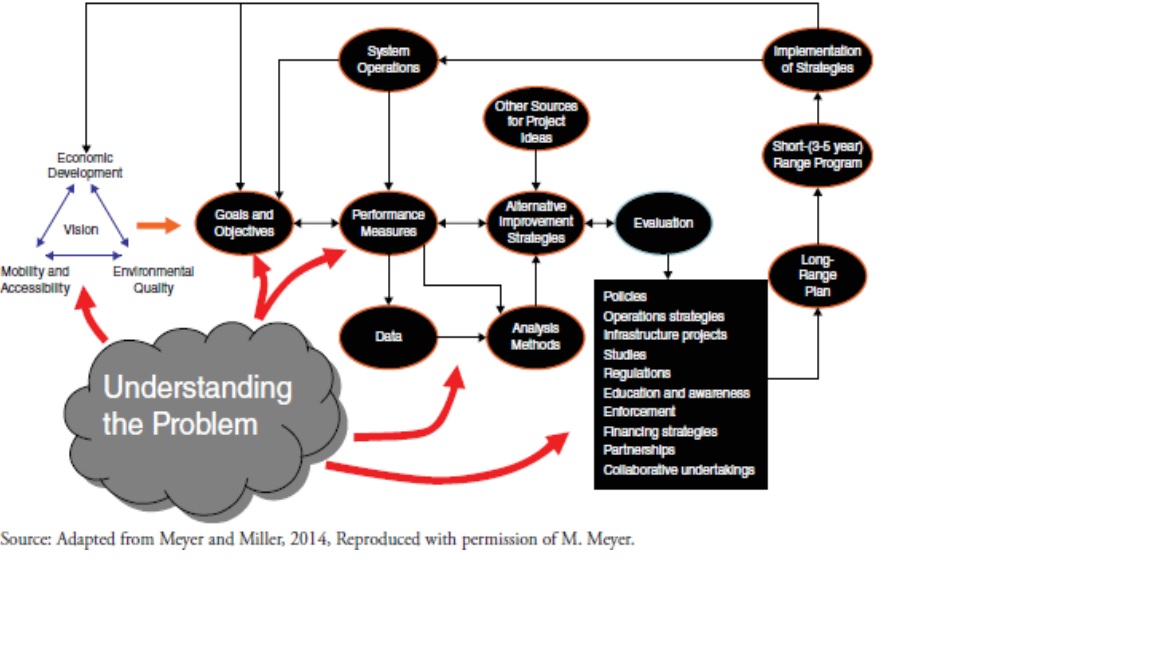
The planning process begins with an understanding of the socio-demographic, land-use, and economic context within which a transportation system operates.
The next step is developing a community or study area vision.
The next step is to acquire more specific information about what the vision means. What is the desired performance of the transportation system?
Goals and objectives can also lead to the identification of system performance measures.
Collecting and analyzing data, the next step of the planning process, is key to understanding the problems and potential challenges facing the transportation system and the surrounding community.
Evaluation is the process of synthesizing the information produced during the analysis step
Transportation System Components
- Functional Classification
- System Extent
- System Use
- System Performance i.e. Mobility , Accessibility and Safety
- System Condition
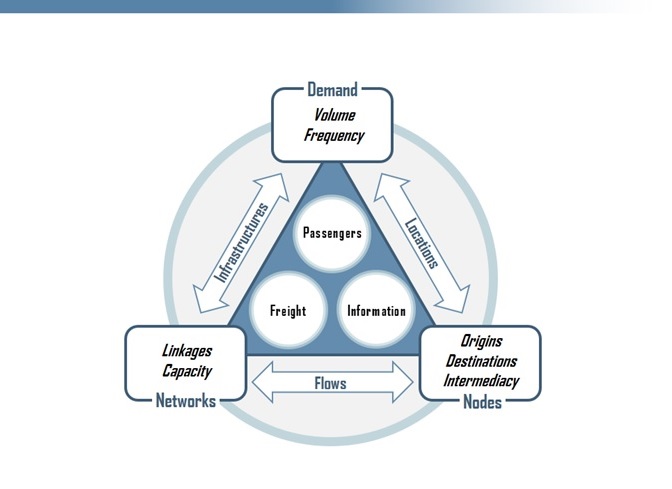
Functional Classification of Transportation System
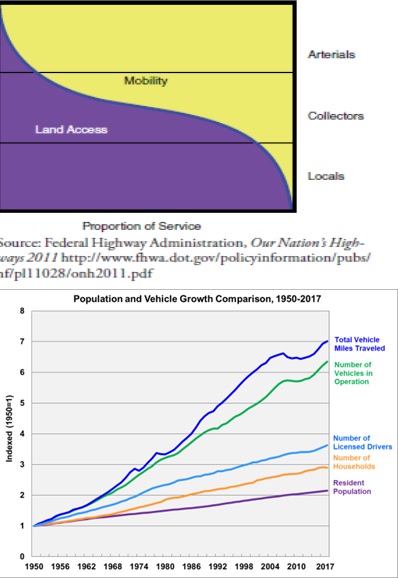
Transportation System Performance
| Traffic | Mobility | Accessibility | |
|---|---|---|---|
| Definition of Transportation | Vehicle travel | Person and goods movement | Ability to obtain goods, services and activities |
| Units of Measure | Vehicle miles | Person-miles and ton-miles | Trips, generalized costs |
| Modes Considered | Automobile and truck | Automobile, truck and transit | Automobile, truck, transit,cycling and walking |
| Common Indicators | Vehicle traffic volumes and speeds, roadway level of service, cost per vehicle mile, parking convenience | Person travel volumes and speeds, road and transit level of service, cost per person-mile, travel convenience | Quality of available transportation choices, distribution of destinations, cost per trip |
| Assumptions | Maximum motor vehicle travel and speed | Maximum personal travel and goods movement | Maximum transport choice and cost efficiency |
| Consideration of Land Use | Treats land use as in input, unaffected by transportation decisions | Recognizes that land use can affect travel choices | Recognizes that land use has major impacts on transportation |
| Favored transportation improvement strategies | Roadway and parking facility improvements to increase capacity, speed and safety | Transportation system improvements that increase capacity, speed and safety | Management strategies and improvements that increase transport system efficiency and safety |
| Implications for travel demand management | Generally considers vehicle travel reductions undesirable, except if congestion is extreme | Supports TDM strategies that improve personal and freight mobility | Supports TDM whenever it is cost effective |
Transit Performance (some examples only)
- Service Effectiveness and Efficiency
- System accessibility (Coverage, EJ, Connectivity)
- Bus Stop Inventory and Design
- Park-and-Ride
- Paratransit (ADA Paratransit improvements)
- Fare Equity
- Major Service Change Policy
- Safety (Incidents, facility, security management) Lately, Safety and Environmental Impact are also considered as Performance Indicators
Urban Population Characterstics
Population Characteristics
- Population growth – including age based distribution
- Household characteristics & vehicle ownership – income levels, number of people
- Distribution of spatial growth – sub-urban, rural and urban areas Reliable data is avialable from US Census Bureau - PUMS
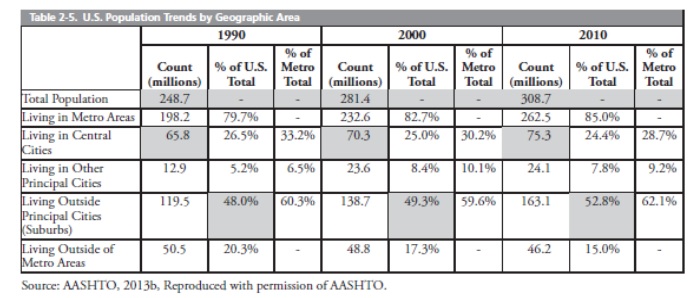
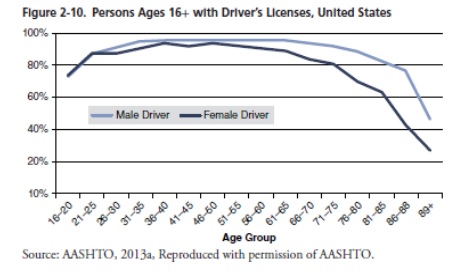
Travel Characterstics
Travel Purpose
- Work/School
- Shopping
- Recreational
- Other
Travel Patterns
- How many trips in day home–to-work, home-to-other and non-home based

Temporal Patterns
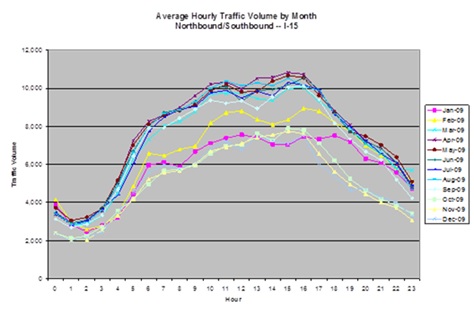
Terminology used in Travel Characterstics Data
- ADT- Average Daily Traffic: if data is collected less than year
- AADT- Average Annual Daily Traffic: if data is collected for through out the year
- AAWT- Average Annual Weekday Traffic: daily traffic adjusted only for weekdays
- Hourly Traffic: traffic volume during an hour
- Short-term counts: traffic counts collected for less than a week
- Vehicle Classification: traffic by type of vehicles
- VMT-Vehicle Miles Traveled: traffic volume multiplied by distance
- Average vehicle occupancy: number of persons in a vehicle
- Traffic density: vehicles per lane per mile
- Lane capacity: number vehicles that can be accommodated in a lane per mile
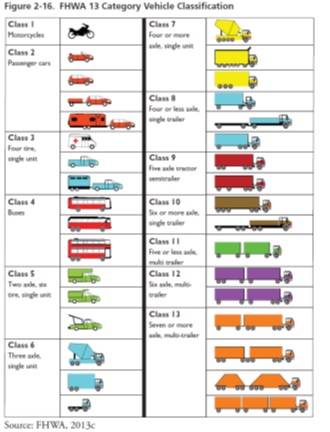
Relationship between functional classes and travel characteristics
| Functional Classification | Distance Served (and Length of Route) | Access Points | Speed Limit | Distance between Routes | Usage (AADT and DVMT) | Significance | Number of Travel Lanes |
|---|---|---|---|---|---|---|---|
| Arterial | Longest | Few | Highest | Longest | Highest | Statewide | More |
| Collector | Medium | Medium | Medium | Medium | Medium | Medium | Medium |
| Local | Shortest | Many | Lowest | Shortest | Lowest | Local | Few |
Traffic count techniques
- Automatic Traffic Recorder
- Weigh-In-Motion
- Video-based counters
- Coverage Counts
- Hourly Counts
- Screen line & Cordon line Counts
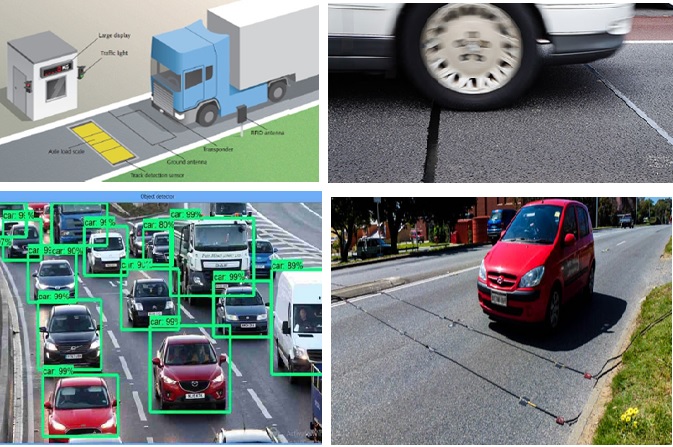
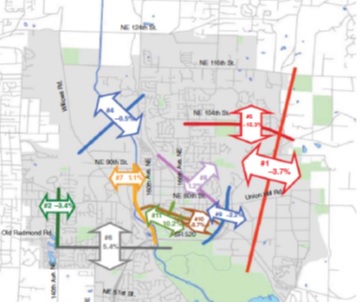
Travel Studies
To identify and understand the transportation problems, we use travel studies Travel time studies congestion, accessibility, mobility, point-to-point travel time etc. Travel surveys
- External Surveys – post card, road side interviews, license plate, vehicle intercept etc.
- Internal Surveys – Household surveys, Transit surveys, work place studies
- Parking Needs Surveys
- Parking space inventory, parking occupancy, duration & turnover and parker characteristics
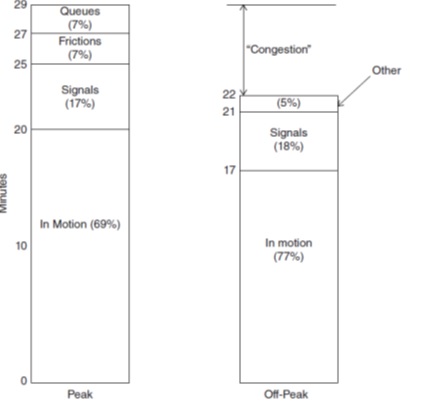

Modal studies
In addition highway data, we need traffic data for different modes of traffic
- Transit Studies
- Transit inventories
- Ridership
- Occupancy of transit
- Service Coverage
- Pedestrian Studies
- Flow rates and capacities
- Walking Speeds
- Door counts
- Good Movement Studies
- Intercept survey
- Interviews
- Truck weight data collection
- License plate surveys
- GPSA-based surveys

Sample travel survey process
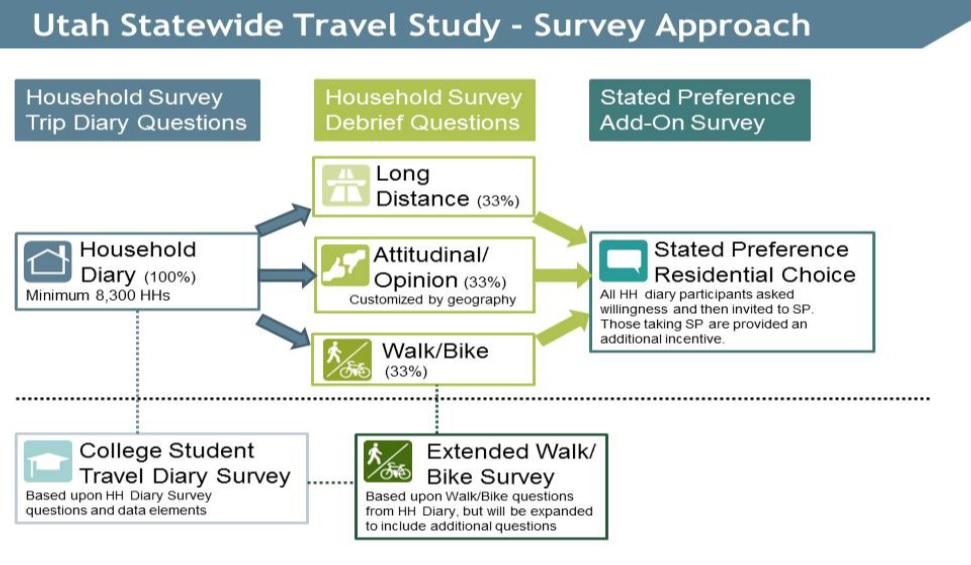
Sample travel survey form
